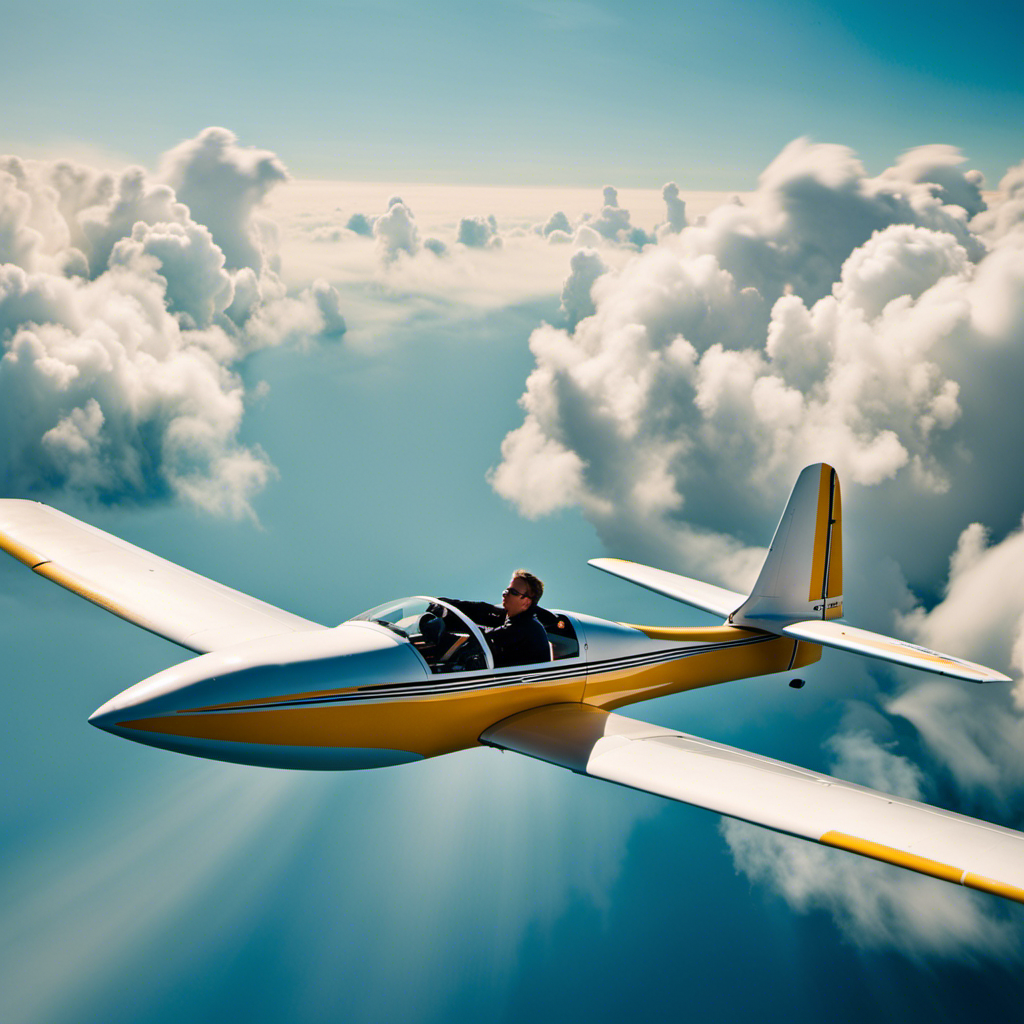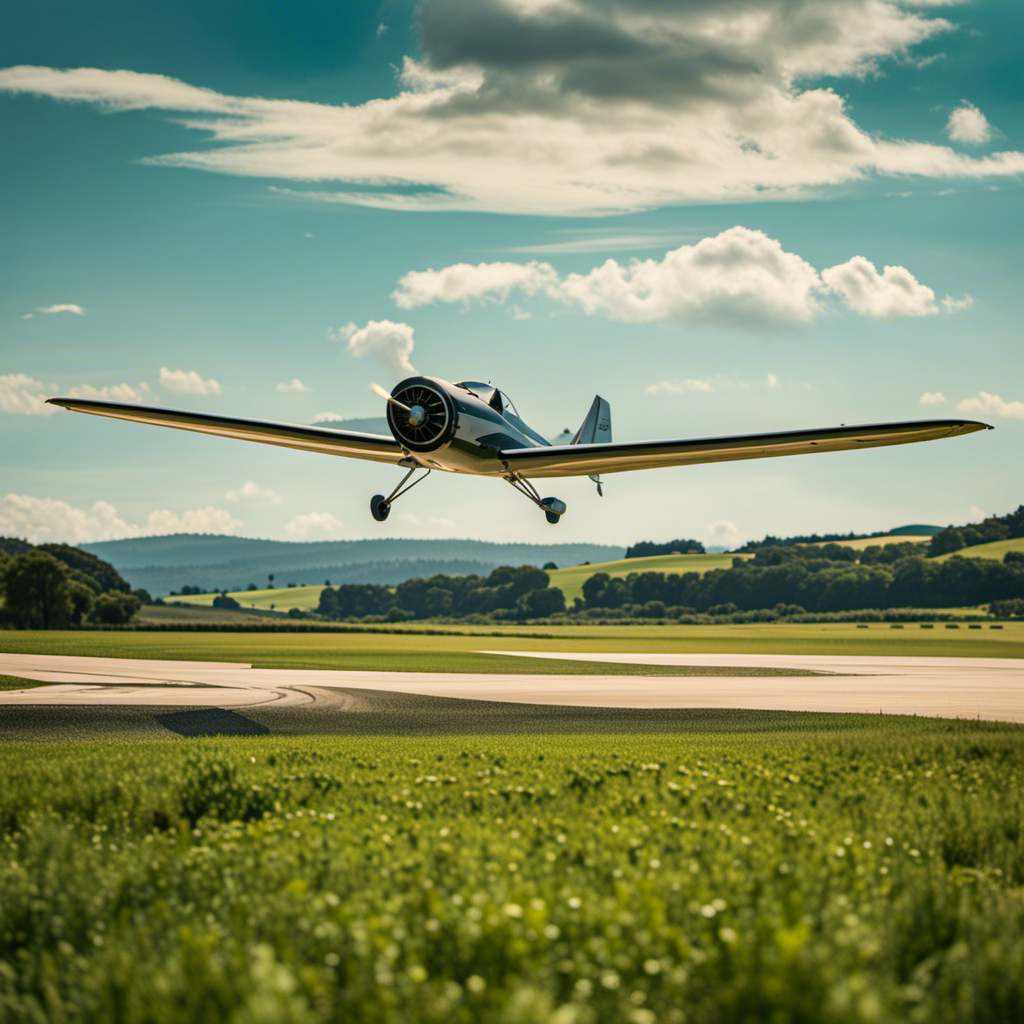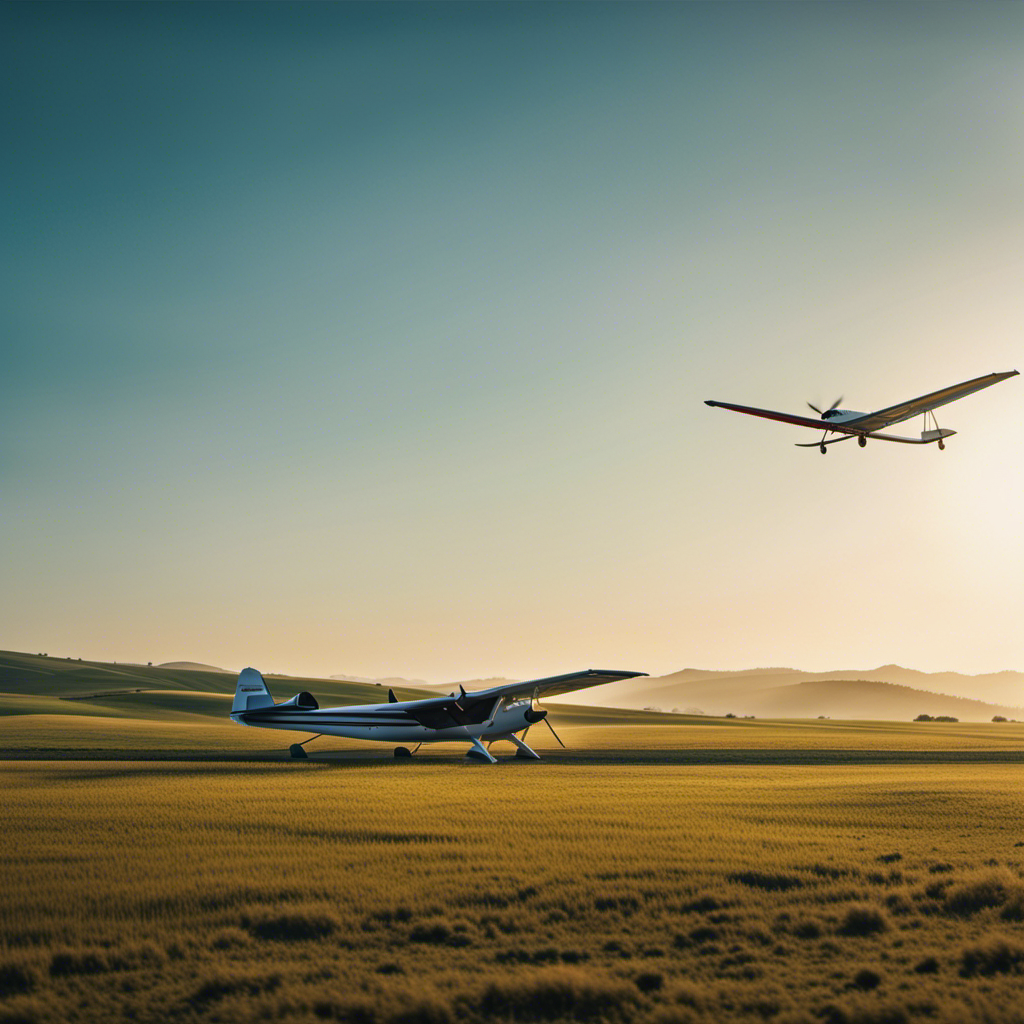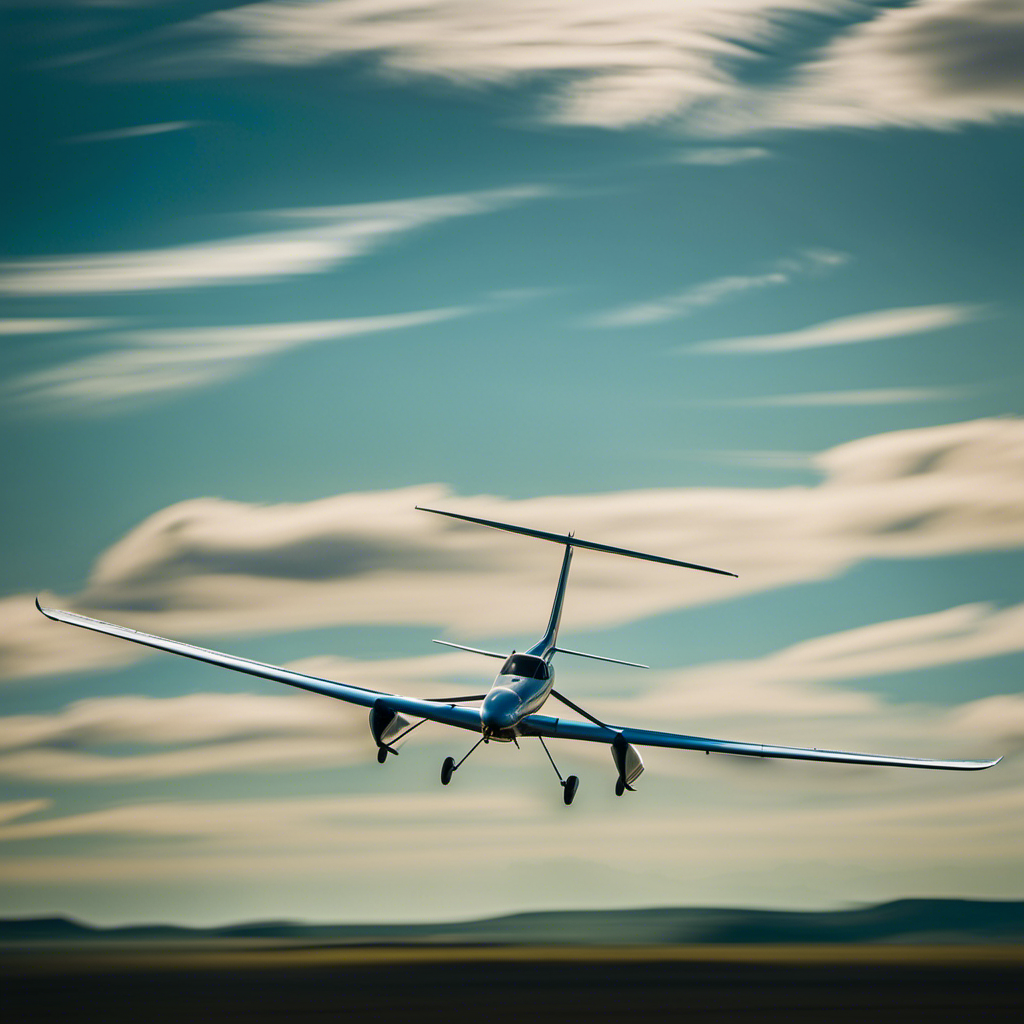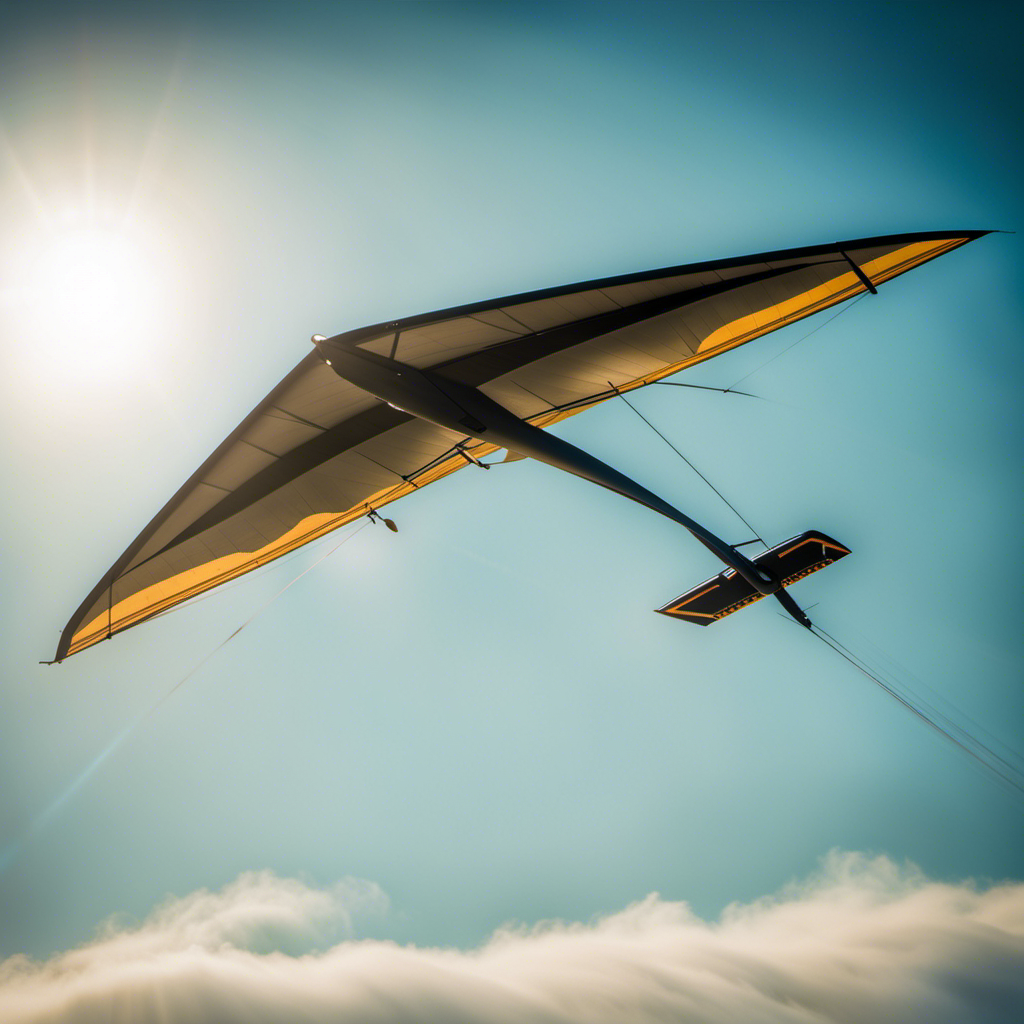As a passionate aviation fan, I have always felt the thrill of soaring through the skies like a bird.
But now, I want to take my love for flying to new heights by becoming a glider instructor.
In this article, I’ll guide you through the path to achieving an elite status in the air.
From obtaining a Private Pilot License to completing instructor training, I’ll share the steps and knowledge needed to inspire future aviators and contribute to the gliding community.
Are you ready to join me on this exhilarating journey?
Key Takeaways
- Staying informed and complying with safety regulations is crucial for glider instructors. This can be done by attending workshops and seminars, regularly reviewing aviation authority publications, and networking with experienced instructors. It ensures compliance, enhances knowledge and skills, and keeps instructors up-to-date.
- Seeking feedback, mentorship, and continuous improvement are important for glider instructors. Feedback and mentorship help enhance safety and expand knowledge, while continuous improvement ensures instructors stay current with industry advancements.
- Inspiring and motivating future aviators is a key responsibility of glider instructors. By sharing their passion for aviation, sharing stories of famous aviators, and igniting a spark within students, instructors can encourage them to pursue their dreams.
- Joining aviation organizations and contributing to the gliding community is beneficial for glider instructors. It provides networking opportunities with like-minded individuals, access to educational resources and training programs, and the chance to make a positive impact in the aviation community.
Obtain a Private Pilot License (PPL)
To obtain a Private Pilot License (PPL), you’ll need to complete a minimum of 40 hours of flight time, including at least 20 hours of flight instruction and 10 hours of solo flying. This is the first milestone on your journey to becoming an elite pilot.
During the flight instruction, you will learn essential skills such as navigation, maneuvering the aircraft, and emergency procedures. The flight instructor will guide you through each lesson, providing valuable feedback and ensuring your progress.
As you gain experience, you will gradually transition to solo flights, where you’ll have the opportunity to apply your knowledge and skills independently. This phase is crucial for building confidence and refining your piloting abilities.
Once you have obtained your PPL, you can move on to the next stage of your aviation career, where you will enhance your knowledge and skills further.
Enhance Your Knowledge and Skills
To become a better glider pilot, it is important to continually enhance your knowledge and skills. As a glider pilot, you should focus on expanding your understanding of gliding principles, meteorology, aerodynamics, and navigation. By increasing your knowledge in these areas, you will be able to make better decisions while flying and handle various situations with confidence.
In addition to knowledge, strengthening your skills is equally vital. Regular practice and training sessions will help you refine your gliding techniques, such as launching, thermalling, and landing. By honing these skills, you will become a more proficient pilot.
Furthermore, it is important to work on your communication and teamwork skills. Effective interaction with other pilots and ground crew members during operations is crucial for safe and efficient flying. By improving your communication and teamwork skills, you will be able to collaborate effectively and ensure smooth operations.
Obtain a Commercial Pilot License (CPL)
Obtaining a CPL (Commercial Pilot License) is a significant milestone for aspiring glider pilots. It opens up new opportunities and paves the way for a career in aviation. Here are four important steps to obtain a CPL:
-
Ground School: This involves studying subjects like aerodynamics, navigation, meteorology, and aviation regulations. It builds a strong foundation of theoretical knowledge.
-
Flight Training: Hands-on experience is crucial. You’ll learn to fly different types of gliders, mastering various maneuvers, and honing your piloting skills.
-
Written Exams: You’ll need to pass written exams that cover topics such as air law, navigation, and meteorology. These exams test your understanding of the theoretical aspects.
-
Flight Test: The final step is a flight test conducted by a designated examiner. This test evaluates your ability to safely operate a glider and demonstrate your proficiency.
With a CPL in hand, the next logical step is to complete instructor training. This allows you to share your knowledge and expertise with others, fostering the growth of future glider pilots.
Complete Instructor Training
Once you have your CPL, you’ll want to consider completing instructor training to further your career in aviation. Becoming a glider instructor allows you to share your passion for flying while gaining invaluable experience and knowledge.
Instructor training involves a comprehensive program that focuses on teaching techniques, flight instruction methods, and safety procedures. You’ll learn how to effectively communicate and demonstrate maneuvers to students, as well as how to assess their progress and provide constructive feedback. Additionally, you’ll gain a deeper understanding of aerodynamics and flight principles, which will enhance your own flying skills.
Pass the Instructor Rating Exam
To successfully pass the exam, you’ll need to demonstrate your knowledge of teaching techniques, flight instruction methods, and safety procedures.
The instructor rating exam is a comprehensive assessment that evaluates your ability to effectively teach and instruct aspiring glider pilots. You will be tested on your understanding of various teaching strategies, such as lesson planning, instructional delivery, and student assessment.
Additionally, you will need to showcase your proficiency in flight instruction methods, including pre-flight briefings, in-flight instruction, and post-flight debriefings.
Safety procedures play a crucial role in the exam, as you must demonstrate your knowledge of emergency protocols, risk management, and maintaining a safe learning environment.
Gain Experience as a Glider Instructor
Gaining experience as a glider instructor allows me to further develop my teaching skills and expand my knowledge in the field. As an instructor, I have the opportunity to work with a variety of students, each with their own unique challenges and learning styles.
This hands-on experience helps me refine my instructional techniques and adapt my approach to best meet the needs of each individual student. Additionally, being in the role of an instructor allows me to deepen my understanding of glider operations and aviation regulations through continuous exposure to real-world scenarios.
Continuously Improve Your Skills
To continuously improve my skills as a glider instructor, I make sure to stay updated on safety regulations. I regularly review industry publications and attend safety briefings provided by the gliding association.
I also make it a priority to attend workshops and seminars that focus on instructional techniques and best practices in glider instruction.
Additionally, I actively seek feedback and mentorship from experienced glider instructors. Their insights and guidance help me refine my teaching methods and become a better instructor overall.
Stay Updated on Safety Regulations
Make sure you’re staying updated on safety regulations to ensure a smooth and secure glider instructor rating journey. As an aspiring glider instructor, it is crucial to have a deep understanding of the rules and regulations that govern the aviation industry. This not only ensures the safety of yourself and your students but also helps maintain the integrity of the profession. One effective way to stay informed is by regularly reviewing and familiarizing yourself with the latest safety regulations issued by the relevant aviation authorities. Additionally, attending workshops and seminars focused on safety regulations can provide valuable insights and updates on best practices in the field. By prioritizing safety and staying up-to-date, you will be well-prepared to navigate the challenges and responsibilities that come with being a glider instructor.
| Safety Regulation Updates | Benefits |
|---|---|
| Stay informed about the latest regulations | Ensures compliance and safety |
| Attend workshops and seminars | Enhances knowledge and skills |
| Regularly review aviation authority publications | Keeps you up-to-date |
| Network with other instructors | Exchange information and experiences |
| Seek guidance from experienced instructors | Learn from their expertise |
With a solid understanding of safety regulations, the next step is to attend workshops and seminars to further enhance your knowledge and skills.
Attend Workshops and Seminars
After staying updated on safety regulations, the next step to becoming an elite glider instructor is to attend workshops and seminars. These events are invaluable opportunities to enhance your knowledge, skills, and network within the glider community.
Workshops and seminars are usually organized by reputable glider associations or training schools and are designed to provide in-depth instruction on various topics related to glider instruction. You can expect to learn about advanced teaching techniques, the latest technological advancements in glider equipment, and best practices for ensuring a safe and effective learning environment. Additionally, these events often feature guest speakers who are industry experts or experienced glider instructors, offering valuable insights and advice.
Attending workshops and seminars not only allows you to expand your knowledge base, but also demonstrates your commitment to continuous learning and professional development. By actively participating in these events, you will gain the necessary expertise to excel as a glider instructor.
Now, let’s explore the importance of seeking feedback and mentorship in your journey towards becoming an elite glider instructor.
Seek Feedback and Mentorship
Seeking feedback and mentorship is crucial for your growth and development as a glider pilot. Here are four reasons why:
-
Continuous Improvement: Feedback from experienced pilots and mentors can help you identify areas for improvement and guide you on how to enhance your skills.
-
Safety Enhancement: By seeking feedback, you can identify any safety concerns or bad habits that may have gone unnoticed. Mentors can provide guidance on how to address these issues and ensure a safer flying experience.
-
Expanding Knowledge: Mentors can share their knowledge and experiences, providing valuable insights into different aspects of glider flying, such as advanced techniques, weather analysis, and navigation.
-
Networking Opportunities: Building relationships with mentors and fellow pilots opens doors to networking opportunities within the glider community, allowing you to learn from different perspectives and gain exposure to new flying experiences.
Inspire Future Aviators
As a glider instructor, I have the incredible opportunity to inspire future aviators and help them pursue their dreams of flying. The role of an instructor goes beyond teaching technical skills; it involves instilling a passion for aviation in each student. By sharing my own experiences and enthusiasm for flying, I can ignite a spark within them.
One way to inspire future aviators is by telling them about the incredible freedom and beauty of soaring through the air in a glider. I can also share stories of famous aviators who have made significant contributions to the field. By exposing students to the wonders of flight and showcasing the possibilities that await them, I can motivate them to pursue their dreams in aviation.
Joining aviation organizations is a natural next step for those who want to further immerse themselves in the world of flying.
Join Aviation Organizations
To fully immerse yourself in the world of aviation, consider joining aviation organizations. These groups offer a wide range of benefits and opportunities that can enhance your aviation journey.
Here are three reasons why joining aviation organizations is a great idea:
-
Networking: By becoming a member, you will have the chance to connect with like-minded individuals who share your passion for aviation. This can lead to valuable connections, mentorship opportunities, and even potential job prospects.
-
Education and Training: Aviation organizations often offer workshops, seminars, and training programs to help members expand their knowledge and skills. These educational resources can be instrumental in enhancing your understanding of aviation principles and practices.
-
Community Involvement: Being part of an aviation organization allows you to contribute to a vibrant community of aviation enthusiasts. You can participate in events, volunteer for aviation-related causes, and make a positive impact in the aviation community.
Contribute to the Gliding Community
Get involved in the gliding community by joining aviation organizations and participating in events and activities that promote and support this thrilling sport.
As a glider pilot, I have found that contributing to the gliding community not only enhances my skills and knowledge but also allows me to connect with fellow enthusiasts who share the same passion for flying.
By joining aviation organizations such as the Glider Pilots Association or the Soaring Society of America, I have access to resources, training opportunities, and networking events that help me stay updated with the latest developments in the gliding world.
Additionally, participating in events and activities like glider competitions, airshows, and fly-ins allows me to showcase my skills, learn from experienced pilots, and foster a sense of camaraderie within the gliding community.
Being an active contributor to the gliding community not only helps me grow as a pilot but also helps promote and support this thrilling sport for future generations.
Frequently Asked Questions
How long does it take to obtain a Private Pilot License (PPL)?
Obtaining a Private Pilot License (PPL) typically takes around 6-12 months, depending on factors such as frequency of training and individual progress. It involves ground and flight training, written and practical exams, and meeting specific requirements set by aviation authorities.
What are the requirements to obtain a Commercial Pilot License (CPL)?
To obtain a Commercial Pilot License (CPL), you’ll need a minimum of 250 flight hours, including 100 hours as pilot-in-command. It’s like climbing a mountain; it takes dedication, perseverance, and the right skills to reach the top.
How many hours of flight time are required to become a glider instructor?
To become a glider instructor, you need a minimum of 200 hours of flight time. This includes 100 hours as pilot-in-command of a glider and 20 hours of cross-country flight.
Are there any specific medical requirements to become a glider instructor?
There are specific medical requirements to become a glider instructor. These include having a valid medical certificate, which typically requires a physical examination by an aviation medical examiner.
What aviation organizations can I join to enhance my career as a glider instructor?
To enhance my career as a glider instructor, I can join aviation organizations like the Soaring Society of America and the British Gliding Association. These organizations provide resources, networking opportunities, and support for glider pilots and instructors.
Conclusion
In conclusion, achieving a glider instructor rating is a journey that requires dedication and perseverance. By starting with obtaining a Private Pilot License (PPL) and enhancing your knowledge and skills, you lay a strong foundation for success.
Completing a Commercial Pilot License (CPL) and undergoing instructor training will further develop your expertise. Passing the Instructor Rating Exam is a pivotal moment, but the journey doesn’t end there.
Continuous improvement and inspiring future aviators are essential for becoming an elite in the air. Joining aviation organizations and contributing to the gliding community will propel your career to new heights.
So spread your wings and soar, for the sky is not the limit, but a canvas for your dreams.
With a heart that soars as high as the skies, Aria, affectionately known as “Skylark,” is the driving force behind Soaring Skyways. Her journey into the gliding world began as a young dreamer gazing up at the soaring birds, yearning to experience the weightlessness and freedom they embodied. With years of experience both in the cockpit and behind the scenes, Aria’s commitment to the gliding community is unwavering.
